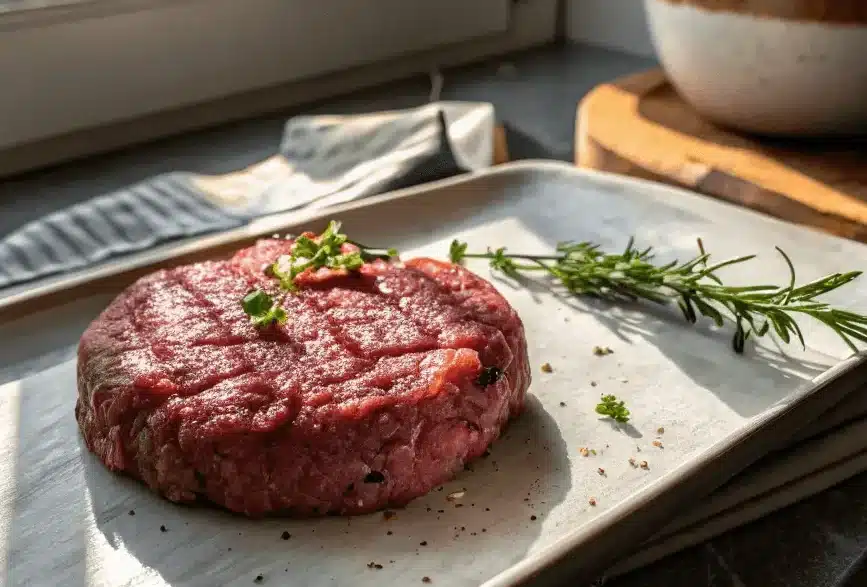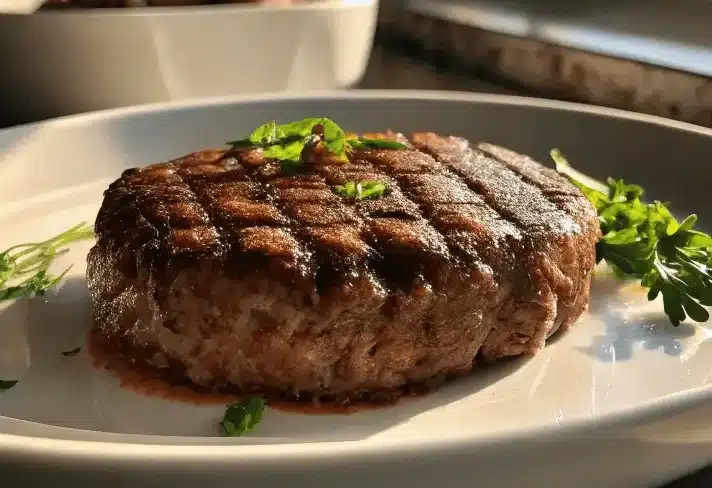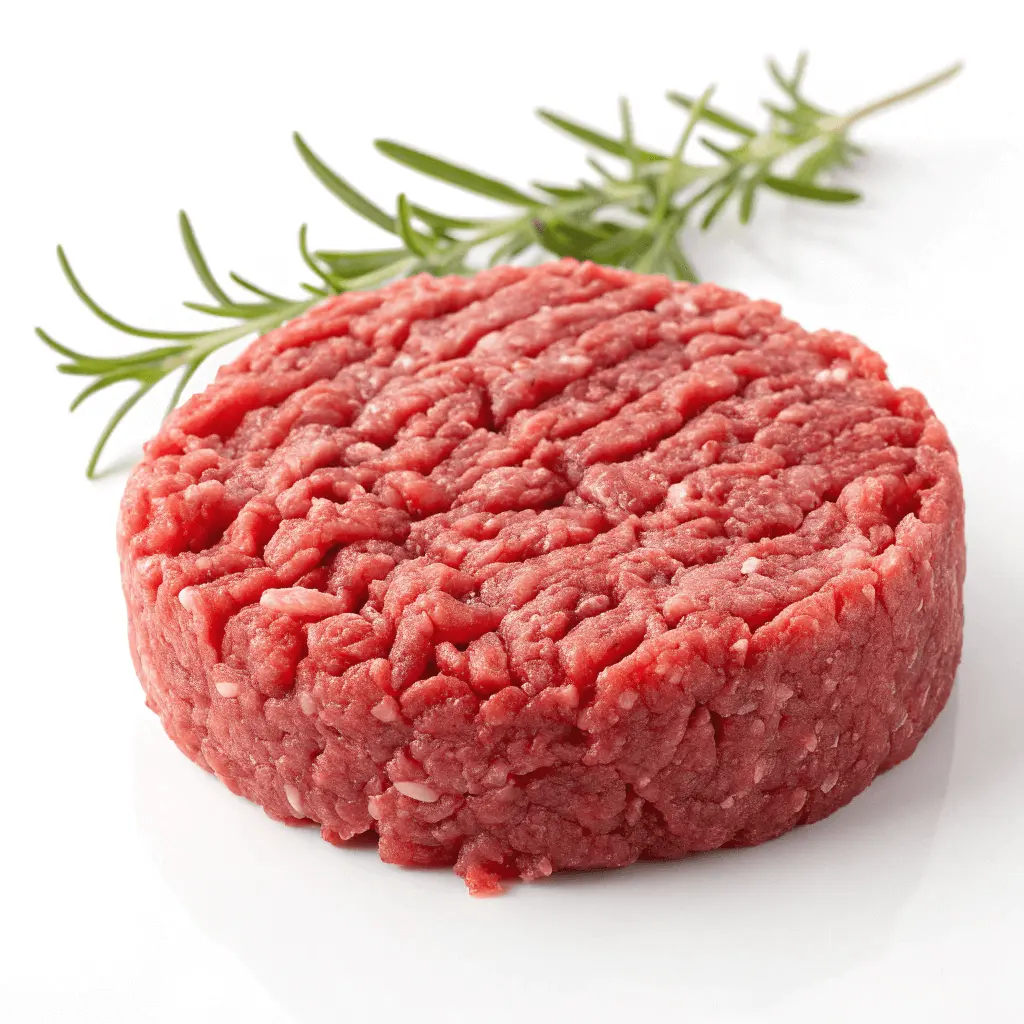Steak Haché is one of the simplest yet most elegant dishes in French cuisine. Translating to “chopped steak,” this dish elevates ground beef into a gourmet experience through thoughtful preparation and classic accompaniments. While it shares similarities with the hamburger, Steak Haché focuses on the quality of the meat, often served with luxurious sauces and traditional sides like French fries or a crisp salad.
This comprehensive guide explores everything about Steak Haché, from its rich history and preparation techniques to variations and serving suggestions. Whether you’re a seasoned chef or a home cook, this article will help you master the art of crafting this quintessential French dish.
What Is Steak Haché?
At its core, Steak Haché is a dish made from high-quality ground beef, shaped into patties, and cooked like a steak. Unlike hamburgers, Steak Haché is served without a bun, allowing the focus to remain on the flavor and texture of the beef itself. The dish is often paired with traditional sauces such as béarnaise or green peppercorn, alongside crispy French fries or a light green salad.
Steak Haché exemplifies the French approach to cooking: simplicity combined with an emphasis on high-quality ingredients. This approach ensures that the flavors of each element shine through, resulting in a dish that is both comforting and refined.
If you enjoy dishes that blend simplicity with sophistication, you might also appreciate the indulgent Lamb Loaded Fries, which offer a similar balance of flavors and textures.
The History
The origins of Steak Haché can be traced back to Europe, where ground meat dishes were developed as a way to make tough cuts of beef tender and flavorful. During periods of economic hardship, grinding beef became a practical way to stretch limited resources while providing hearty, nutritious meals.
In France, Steak Haché rose to prominence as a working-class dish, valued for its affordability and satisfying taste. Over time, it became a staple in French bistros, where it was elevated with gourmet sauces and elegant presentations. Today, Steak Haché is a beloved dish enjoyed in homes and restaurants worldwide.
For a deeper dive into other historical comfort foods, consider exploring the classic Old-Fashioned Baked Macaroni and Cheese, which shares a similar evolution from simplicity to sophistication.
Ingredients That Define Steak Haché

The beauty of Steak Haché lies in its simplicity, which allows the quality of its ingredients to take center stage. To create an authentic Steak Haché, focus on sourcing the following key ingredients:
1. High-Quality Ground Beef
Choose ground chuck with a fat content of 20%. The higher fat content ensures the patty remains juicy and flavorful during cooking.
2. Seasonings
Steak Haché relies on minimal seasoning—just kosher salt and freshly ground black pepper—to highlight the natural flavors of the beef.
3. Neutral Cooking Oil
Use a neutral oil, such as canola or vegetable oil, to sear the patties. These oils have a high smoke point and allow for even browning.
4. Sauces
Classic French sauces like béarnaise, green peppercorn, and red wine reduction add depth and richness to the dish.
5. Accompaniments
Traditional sides such as French fries, roasted vegetables, or a simple green salad complete the meal, providing balance and texture.
How to Prepare
Crafting the perfect Steak Haché requires attention to detail and a commitment to using fresh, high-quality ingredients. Follow these steps to recreate this iconic dish:
Ingredients
- 1 pound ground chuck (80% lean, 20% fat)
- Kosher salt and freshly ground black pepper
- 2 tablespoons neutral cooking oil (e.g., vegetable oil)
- Optional: Béarnaise, green peppercorn, or red wine sauce for serving
Instructions
- Prepare the Beef
Divide the ground beef into four equal portions. Shape each portion into a patty approximately ¾-inch thick. Handle the meat gently to avoid compacting it, as this can affect the texture. - Season the Patties
Generously sprinkle both sides of each patty with kosher salt and freshly ground black pepper. - Heat the Skillet
Heat the oil in a cast-iron or stainless-steel skillet over medium-high heat until shimmering. - Cook the Patties
Place the patties in the skillet and cook for 2–3 minutes on one side. Flip and cook for another 2–3 minutes, or until the desired doneness is reached. For medium-rare, the internal temperature should be 125°F. - Rest the Patties
Transfer the cooked patties to a plate and allow them to rest for five minutes. This step is crucial for retaining the juices. - Serve and Enjoy
Plate the patties with your chosen sides and drizzle them with your preferred sauce.
Accompaniments

The simplicity of Steak Haché makes it an ideal canvas for a variety of sides and sauces. Here are some classic and creative accompaniments:
1. Classic Sauces
- Béarnaise Sauce: A rich, herbed butter sauce made with egg yolks and white wine vinegar.
- Green Peppercorn Sauce: A creamy, slightly spicy sauce that complements the savory beef.
- Red Wine Reduction: A luxurious, deeply flavored sauce made from red wine and beef stock.
2. Traditional Sides
- French Fries: Crispy and golden, fries are a quintessential pairing for Steak Haché.
- Green Salad: A light salad with a tangy vinaigrette balances the richness of the beef and sauce.
- Roasted Vegetables: Seasonal vegetables like carrots, zucchini, or asparagus add color and texture.
For more side dish inspiration, consider the Ultimate Smoked Mac and Cheese from this recipe.
Creative Variations
While the traditional recipe is beloved, Steak Haché offers endless opportunities for creativity. Here are some modern variations to try:
1. Herb-Infused Patties
Mix fresh herbs such as thyme, parsley, or rosemary into the ground beef before shaping the patties. This adds an aromatic dimension to the dish.
2. Cheese-Topped Steak Haché
Top the patties with slices of Gruyère, Comté, or Emmental cheese. Allow the cheese to melt over the patty for a decadent finish.
3. Plant-Based Alternatives
For a vegetarian option, substitute the beef with a high-quality plant-based ground meat. Prepare it using the same techniques for a flavorful meatless dish.
4. Regional Flavors
Incorporate spices and seasonings from different cuisines, such as smoked paprika, cumin, or chili powder, for an international twist.
Tips for Perfect
Achieving restaurant-quality Steak Haché at home is easier with these expert tips:
- Use Fresh Beef: Freshly ground beef yields the best flavor and texture.
- Don’t Overwork the Meat: Handle the beef as little as possible to maintain its tender texture.
- Sear at High Heat: A hot skillet ensures a flavorful crust without overcooking the interior.
- Rest the Meat: Allow the cooked patties to rest for a few minutes to lock in the juices.
- Experiment with Sauces: Pair the dish with different sauces to discover your favorite flavor combinations.
FAQs
Why Is a Must-Try Dish
Steak Haché is more than just a meal—it celebrates French culinary tradition. Its simplicity, versatility, and elegance make it a dish that’s equally at home on a casual dinner table or a fine dining menu.
If you’re ready to explore more comfort food with a gourmet twist, check out the Cheeseburger Guide or indulge in the rich flavors of Baked Macaroni and Cheese.

